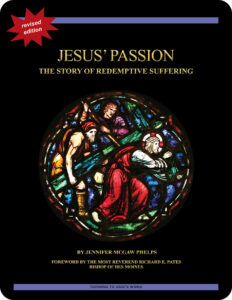 Jesus’ Passion:
Jesus’ Passion:
The Story of Redemptive Suffering
Lesson 3 What Is Truth?
the Gospel According to John 18:33—19:16
the Gospel According to Matthew 27:15–31
Revised Standard Version Catholic Edition (RSVCE)*
New American Bible Revised Edition (NABRE)*
Catechism of the Catholic Church
ex libris (in our library)
next lesson: Via Dolorosa: The Way of Sorrows
This material coordinates with Lesson 3 on pages 22–27 in Jesus’ Passion: The Story of Redemptive Suffering. Click on the title of the study to access Lessons 1 through 5.
“For God so loved the world that he gave his only Son, that whoever believes in him should not perish but have eternal life.”—the Gospel According to John 3:16 (RSVCE)**
welcome to our annual Lenten Bible study
We invite readers to become acquainted with Turning to God’s Word Catholic Bible studies through  Jesus’ Passion: The Story of Redemptive Suffering, which was granted
Jesus’ Passion: The Story of Redemptive Suffering, which was granted  an imprimatur in 2014. In 2025, the free digital version of this popular Turning to God’s Word Catholic Bible study will be posted from Ash Wednesday, March 5, through Easter Sunday, April 20. If you have a question or comment about this or any other Turning to God’s Word Catholic Bible study, click on one of the “ask us your question” or “what do you think” buttons on any online study page.
an imprimatur in 2014. In 2025, the free digital version of this popular Turning to God’s Word Catholic Bible study will be posted from Ash Wednesday, March 5, through Easter Sunday, April 20. If you have a question or comment about this or any other Turning to God’s Word Catholic Bible study, click on one of the “ask us your question” or “what do you think” buttons on any online study page.
open with prayer
It’s always wise to begin any Bible study with prayer, whether reading the Scriptures alone or meeting with others in a discussion group. You can pray using your own words or use one of the opening prayers on our website. We especially like the following:
Lord Jesus, you promised to send your Holy Spirit to teach us all things.
As we read and study your word today,
allow it to touch our hearts and change our lives. Amen.
to coordinate with the movie
Lesson 3 coordinates with roughly the third 25 minutes of the film The Passion of the Christ. (See “Movie Notes” on page 22 in the Introduction For God So Loved the World to Jesus’ Passion: The Story of Redemptive Suffering for instructions about where to start and stop watching for this lesson.)
a strong & disturbing theme
If you’re viewing the movie The Passion of the Christ in connection with Jesus’ Passion: The Story of Redemptive Suffering, the depiction of Jesus’ physical suffering at this point in the film is almost unbearable to watch. The intent in the film seems to be to call our attention to the fact that Jesus’ suffering is real, and this is attested in the Gospels—although they don’t dwell on Jesus’ scourging in such detail. The underlying point is key to our Christian faith: Jesus’ suffering is real, and it has a purpose. That purpose is to bring about the redemption of humanity.
ex libris—learn more about Jesus’ Passion, death & Resurrection
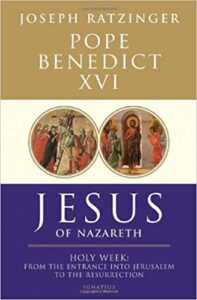 Jesus of Nazareth: Holy Week is one of three books in a powerful series about Jesus in the
Jesus of Nazareth: Holy Week is one of three books in a powerful series about Jesus in the  Gospels. Written by Pope Benedict XVI, the Holy Week volume looks at the decisive events that are the focus of Jesus’ last week on earth. The Scripture covered begins with Jesus’ entrance into Jerusalem and continues through the time of his Resurrection. Read excerpts and learn more about the Jesus of Nazareth trilogy and other works related to Bible study at ex libris—main bookshelf.
Gospels. Written by Pope Benedict XVI, the Holy Week volume looks at the decisive events that are the focus of Jesus’ last week on earth. The Scripture covered begins with Jesus’ entrance into Jerusalem and continues through the time of his Resurrection. Read excerpts and learn more about the Jesus of Nazareth trilogy and other works related to Bible study at ex libris—main bookshelf.
the popes inspire us—what is truth?
Much in the scriptural account of Jesus’ Passion hinges on this question. In his book Jesus of Nazareth: Holy Week, Pope Benedict XVI offers this explanation: “‘Bearing witness to the truth’ means  giving priority to God and to his will over against the interests of the world and its powers. God is the criterion of being. In this sense, truth is the real ‘king’ that confers light and greatness upon all things. We may also say that bearing witness to the truth means making Creation intelligible and its truth accessible from God’s perspective—the perspective of creative reason—in such a way that it can serve as a criterion and a signpost in this world of ours. … Let us say plainly: The unredeemed state of the world consists precisely in the failure to understand the meaning of Creation, in the failure to recognize truth; as a result, the rule of pragmatism is imposed, by which the strong arm of the powerful becomes the god of this world.” The work is filled with insights about the Scriptures, and is especially well suited to Lenten reflections.
giving priority to God and to his will over against the interests of the world and its powers. God is the criterion of being. In this sense, truth is the real ‘king’ that confers light and greatness upon all things. We may also say that bearing witness to the truth means making Creation intelligible and its truth accessible from God’s perspective—the perspective of creative reason—in such a way that it can serve as a criterion and a signpost in this world of ours. … Let us say plainly: The unredeemed state of the world consists precisely in the failure to understand the meaning of Creation, in the failure to recognize truth; as a result, the rule of pragmatism is imposed, by which the strong arm of the powerful becomes the god of this world.” The work is filled with insights about the Scriptures, and is especially well suited to Lenten reflections.
something that’s not scriptural
The demon baby that Satan’s character holds in the movie isn’t scriptural. We don’t know if Satan has a baby, and despite this film and others such as Rosemary’s Baby, it seems unlikely. As Christians we really shouldn’t expend a lot of thought on this. The filmmakers most certainly chose to show Satan with a demon baby to symbolize something they believe about Satan. You can believe it symbolizes anything you like, but don’t make the mistake of believing that it’s Scripture-based. Even in the book of Revelation, which includes several of the best scriptural images that directly point to Satan attempting to imitate God, no images of any little baby dragons appear. In Acts of the Apostles 13:10, however, Paul refers to the adult magician Elymas as “you son of the devil.”
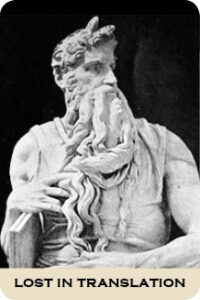 Satan & Beelzebub—you could look them up in our archives
Satan & Beelzebub—you could look them up in our archives
What can we learn about the devil by looking at the ancient Hebrew word from which the name Satan is derived? In Lost in Translation, Turning to God’s Word author Matthew Phelps helps present-day readers connect with ideas expressed in the original languages of the Scriptures. You can learn more about “Satan,” sometimes confused with Beelzebub. New Lost in Translation entries are posted on Mondays, and past entries are archived on our website. Contact us if you’d like to receive Lost in Translation by email every week.
a lot of blood
There’s more blood in this section of Jesus’ Passion: The Story of Redemptive Suffering than you’ll see in most slasher movies. Is this just Hollywood overkill—no pun intended—or does it also represent some basic Christians understanding? Blood is an important symbol. The sacrament of the Eucharist most definitely isn’t a symbol, but the symbolism that underlies it nevertheless is ancient, deep, and very powerful. In the sixth chapter in the Gospel According to John, Jesus tells his followers that they’ll have to eat his flesh and drink his blood. There’s more than meets the modern eye about why the Jews who  heard Jesus speaking found this requirement so unsettling. You can learn more about Jesus’ Bread of Life discourse in Lesson 7 A Lad with Five Barley Loaves and Lesson 8 I Am the Living Bread, both in the Turning to God’s Word Catholic Bible study The Gospel According to John: An Encounter with Grace & Truth.
heard Jesus speaking found this requirement so unsettling. You can learn more about Jesus’ Bread of Life discourse in Lesson 7 A Lad with Five Barley Loaves and Lesson 8 I Am the Living Bread, both in the Turning to God’s Word Catholic Bible study The Gospel According to John: An Encounter with Grace & Truth.
Blood was associated with pagan religious rituals, but the reason God forbade the Hebrews to consume blood is its connection with life and death, two areas that fall under the jurisdiction of God. The book of Leviticus 17:10-11 warns: “If any man of the house of Israel or of the strangers that sojourn among them eats any blood, I will set my face against that person who eats blood, and will cut him off from among his people. For the life of the flesh is in the blood; and I have given it for you upon the altar to make atonement for your souls; for it is the blood that makes atonement, by reason of the life.”
the blood prohibition in Scripture
Blood is prohibited to the Israelites by God to counteract idolatrous practices they may have picked up from the Egyptians or other pagans. Worship of false gods of the time involved drinking the blood of animals. The people who were falsely worshiping the animal as a god believed that drinking the animal’s blood would then impart its life force and any presumed god-like qualities to the idolater. The LORD’s prohibition focuses on the fact that only the one God of the Israelites is the God of life.
a prophetic passage
The most mysterious thing about the passage from the book of Leviticus is the prophetic nature of God’s words to the Israelites: “For the life of the flesh is in the blood; and I have given it for you upon the altar to make atonement for your souls.” This appears to point ahead to Jesus Christ, and especially to  the explanation in the Letter to the Hebrews about how it is that Jesus is able to bring about our salvation. You can learn more in Lesson 10 Mediator of the New Covenant in the Turning to God’s Word Catholic Bible study The Letter to the Hebrews: An Explanation of the Mechanism of Our Salvation.
the explanation in the Letter to the Hebrews about how it is that Jesus is able to bring about our salvation. You can learn more in Lesson 10 Mediator of the New Covenant in the Turning to God’s Word Catholic Bible study The Letter to the Hebrews: An Explanation of the Mechanism of Our Salvation.
Jesus lifts this prohibition against drinking blood when he establishes the sacrament of the Eucharist. Jesus can do this because he’s God. The reasoning behind what Jesus is suggesting isn’t apparent, even to Peter, who nevertheless recognizes this truth enough to express it. In the case of the Eucharist, the life force that resides in Jesus’ blood is connected to eternal life and not to a false god. It’s this that the Jews fail to understand in the sixth chapter in the Gospel According to John. It’s this understanding that’s behind the movie’s non-scriptural scenes depicting the precious nature of Jesus’ blood.
WHAT DO YOU THINK about the sacrament of the Eucharist?
The Eucharist, in which Catholics receive the Body and Blood of Jesus, is often called the sacrament of sacraments.
 ? What do you do to prepare to receive the sacrament of the Eucharist each week at Sunday Mass?
? What do you do to prepare to receive the sacrament of the Eucharist each week at Sunday Mass?
? What effects has receiving the Eucharist made in your day-to-day life?
? How would you explain the Eucharist to a non-Catholic friend who asked?
? What can you do to increase your awareness of the awesome gift that is the sacrament of the Eucharist?
the crown of thorns
The crown of thorns is present in almost every visual representation of the crucified Christ. You can learn more about the irony of this by reading “Jesus Is Crowned with Thorns” on page 25 in Jesus’ Passion: The Story of Redemptive Suffering. The scene in this section of the movie The Passion of the Christ involving the Blessed Virgin Mary and Pontius Pilate’s wife is discussed in “Precious Blood” on page 26 in Jesus’ Passion: The Story of Redemptive Suffering.
the best Catholic commentary about Scripture
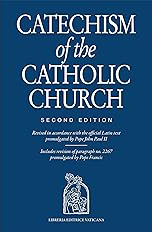 To find out more about how Church teaching is supported by Scripture passages in Jesus’ Passion: The Story of Redemptive Suffering, check out the Index of Citations in the Catechism of the Catholic Church. Links to the primary Scripture passages in the lesson (Revised Standard Version Catholic Edition [RSVCE*]) and relevant paragraphs in the Catechism are provided here. Not every passage in the biblical text for this Catholic Bible study is referenced in a Catechism paragraph, however, including the passage in this lesson from the Gospel According to Matthew 27:15–31.
To find out more about how Church teaching is supported by Scripture passages in Jesus’ Passion: The Story of Redemptive Suffering, check out the Index of Citations in the Catechism of the Catholic Church. Links to the primary Scripture passages in the lesson (Revised Standard Version Catholic Edition [RSVCE*]) and relevant paragraphs in the Catechism are provided here. Not every passage in the biblical text for this Catholic Bible study is referenced in a Catechism paragraph, however, including the passage in this lesson from the Gospel According to Matthew 27:15–31.
the Gospel According to John 18:36—paragraphs 549, 600
the Gospel According to John 18:37—paragraphs 217, 559, 2471
the Gospel According to John 19:11—paragraph 600
the Gospel According to John 19:12—paragraph 596
the Gospel According to John 19:15—paragraph 596
don’t forget about our indexes & extra online material

 If you’re trying to locate information about a Scripture passage, you can look it up in the index at the back of the online version of this study. If you want to revisit a commentary, you can look it up by title in the topics index. If you want to learn more about another book of the Bible for which there’s a Turning to God’s Word study, you can read online commentaries and watch any accompanying videos by choosing a lesson from one of the study directories. (There are no lesson videos with Jesus’ Passion: The Story of Redemptive Suffering.) Finally, if you have a question or would like to make a comment about any of our studies, you can use the “ask us your question” or “what do you think” button to email our authors.
If you’re trying to locate information about a Scripture passage, you can look it up in the index at the back of the online version of this study. If you want to revisit a commentary, you can look it up by title in the topics index. If you want to learn more about another book of the Bible for which there’s a Turning to God’s Word study, you can read online commentaries and watch any accompanying videos by choosing a lesson from one of the study directories. (There are no lesson videos with Jesus’ Passion: The Story of Redemptive Suffering.) Finally, if you have a question or would like to make a comment about any of our studies, you can use the “ask us your question” or “what do you think” button to email our authors.
ex libris—Church documents & books about religious topics
Link to magisterial documents referred to in our Bible studies at ex libris—magisterial documents.  This listing includes significant recent encyclicals as well as a number of historical Church documents. Recommended books related to Scripture study can be found at ex libris—main bookshelf.
This listing includes significant recent encyclicals as well as a number of historical Church documents. Recommended books related to Scripture study can be found at ex libris—main bookshelf.
wondering how to pronounce some of these words?
The following links are to readings from the New International Version (NIV) Bible. To listen, click on the audio icon above the printed text. Although not taken from the translations used in our study materials, the NIV readings provide an audio guide to pronunciation of words in this lesson’s primary biblical texts. A close online version of the translation of the Bible used in Catholic liturgy in the United States as well as an audio guide for daily Mass readings for the current month can be found on the website of the United States Conference of Catholic Bishops (USCCB).
the Gospel According to John 18:33—19:16 (NIV)
the Gospel According to Matthew 27:15–31 (NIV)
close with Bible-based prayer related to this lesson
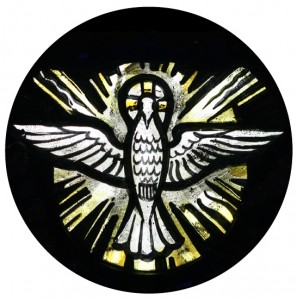 Many groups conclude with a prayer based on Scripture, and some participants include Scripture-specific prayer in their individual study. If you’re uncomfortable composing your own Bible-based prayers, you can follow our four easy steps. If you prefer, you can use the following prayer based on the primary biblical texts that accompany this lesson in Jesus’ Passion: The Story of Redemptive Suffering.
Many groups conclude with a prayer based on Scripture, and some participants include Scripture-specific prayer in their individual study. If you’re uncomfortable composing your own Bible-based prayers, you can follow our four easy steps. If you prefer, you can use the following prayer based on the primary biblical texts that accompany this lesson in Jesus’ Passion: The Story of Redemptive Suffering.
O God, source of all power and truth,
you allowed your Son to offer himself up to be scourged,
mocked, and delivered to be crucified for our sins.
Help us to see that it’s you whom we obey
in those who govern us.
We ask this in union with the Holy Spirit
and in the name of Jesus Christ, the great King,
who chose a crown of thorns over an earthly royal crown. Amen.
 coming up in the next lesson
coming up in the next lesson
The online study page for Lesson 4 Via Dolorosa: The Way of Sorrows in Jesus’ Passion: The Story of Redemptive Suffering contains additional commentary, questions, and links to related material. The lesson roughly corresponds to the fourth 25 minutes of the film The Passion of the Christ. Links to the free digital version of the study will remain posted through Lent this year, and all of the lessons will be available again during Lent in 2025.
Lesson 4 Via Dolorosa: The Way of Sorrows—the Gospel According to Luke 23:26–32, the Gospel According to Mark 15:21–22, the Gospel According to Matthew 5:43–46, and the Gospel According to John 10:14–18
Lesson 2 The Son of Man Before the Chief Priests—the Gospel According to Mark 14:53–65, the Gospel According to Matthew 27:3–7, the Gospel According to John 18:12–38, and the Gospel According to Luke 23:1–12
you also may like our study of the Gospel According to John
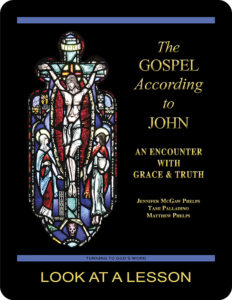 The Gospel According to John: An Encounter with Grace & Truth, a 25-lesson Catholic Bible study with an imprimatur, examines the Fourth Gospel’s view of Jesus Christ as the Son of God, with special emphasis on the institution of the sacraments of the Church as the means by which Christians are purified and made holy. This recently revised study includes maps and additional commentary, and takes a closer look at the way in which Jesus relates to individual men and women. Click on the book’s cover to view a sample lesson.
The Gospel According to John: An Encounter with Grace & Truth, a 25-lesson Catholic Bible study with an imprimatur, examines the Fourth Gospel’s view of Jesus Christ as the Son of God, with special emphasis on the institution of the sacraments of the Church as the means by which Christians are purified and made holy. This recently revised study includes maps and additional commentary, and takes a closer look at the way in which Jesus relates to individual men and women. Click on the book’s cover to view a sample lesson.
start a Turning to God’s Word Bible study
Thank you for your interest in Jesus’ Passion: The Story of Redemptive Suffering,  our annual free Lenten
our annual free Lenten  Bible study. Lessons can be downloaded from our website through Easter. Information about beginning a group study can be found at start a Bible study. Tami, Matthew, and I are available to answer questions about the Turning to God’s Word method of Catholic Bible study. You may use this email to contact us directly if you’re interested in starting another Turning to God study or in having your study schedule listed with other TtGW study groups on our website. —Jennifer
Bible study. Lessons can be downloaded from our website through Easter. Information about beginning a group study can be found at start a Bible study. Tami, Matthew, and I are available to answer questions about the Turning to God’s Word method of Catholic Bible study. You may use this email to contact us directly if you’re interested in starting another Turning to God study or in having your study schedule listed with other TtGW study groups on our website. —Jennifer
*There are seven deuterocanonical books in the Old Testament—the Books of Tobit, Judith, Wisdom, Sirach, Baruch, and First and Second Maccabees, as well as some passages in the Books of Esther and Daniel. Protestants usually refer to these works as “apocryphal,” a word that means “outside the (Protestant) canon” because they’re excluded from most Protestant Bibles. The word “deuterocanonical” means “second canon”; Catholics use that word to refer to any section of the Catholic Old Testament for which there are no extant, or existing, Hebrew manuscripts. All of the deuterocanonical books appear in the Septuagint, the earliest remaining versions of which date to the 1st century B.C. This Greek translation of the Old Testament was in common use by Jews at the time of Jesus. Learn more by reading How Do Catholic & Protestant Bibles Differ?
Turning to God’s Word printed Bible studies use the 2006 Revised Standard Version Second Catholic Edition (RSV2CE) translation for all Scripture references except those to the Psalms, which are taken from The Abbey Psalms and Canticles, prepared by the Benedictine monks of Conception Abbey and published in 2020 by the United States Conference of Catholic Bishops (USCCB). All Scripture links for the digital version of Jesus’ Passion: The Story of Redemptive Suffering are to the 1966 Revised Standard Version Catholic Edition (RSVCE) translation. The New International Version (NIV) audio recordings follow the same chapter and verse numbering as the RSV Catholic translations, but the NIV translation doesn’t include the deuterocanonical books and passages.
The 1966 RSVCE uses archaic pronouns and verb forms such as “thee,” “thou,” “didst” in the Psalms and in direct quotations attributed to God. The 2006 RSV2CE replaces these with more accessible English. The few significant translation changes in the RSV2CE include rendering almah as “virgin” in the Book of Isaiah 7:14 and restoring the term “begotten” in the Gospel According to John 3:16.
Numbering varies for some passages in this Bible study. Turning to God’s Word studies follow the numbering in the Revised Standard Version Catholic translations (RSV2CE and RSVCE). Discrepancies in the New American Bible Revised Edition (NABRE) are noted in the Index of Scripture Citations.
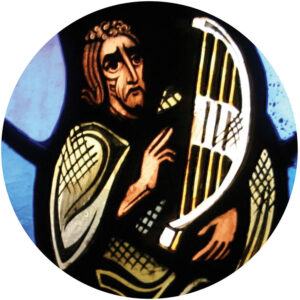 You can learn more about the Psalms by viewing a sample lesson from the Turning to God’s Word Catholic Bible study Sing a New Psalm: Communicating with God Through the Prayers of the Church—Volume I: Lauds & Vespers. The second part of that study, Sing a New Psalm: Communicating with God Through the Prayers of the Church—Volume II: Vigils, Day Prayer & Compline, is scheduled for publication in 2025. Some verse numbers may vary in different translations of the Psalms.
You can learn more about the Psalms by viewing a sample lesson from the Turning to God’s Word Catholic Bible study Sing a New Psalm: Communicating with God Through the Prayers of the Church—Volume I: Lauds & Vespers. The second part of that study, Sing a New Psalm: Communicating with God Through the Prayers of the Church—Volume II: Vigils, Day Prayer & Compline, is scheduled for publication in 2025. Some verse numbers may vary in different translations of the Psalms.
**The Gospel According to John 3:16 (RSV2CE) reads: “For God so loved the world that he gave his only-begotten Son, that whoever believes in him should not perish but have eternal life.”
